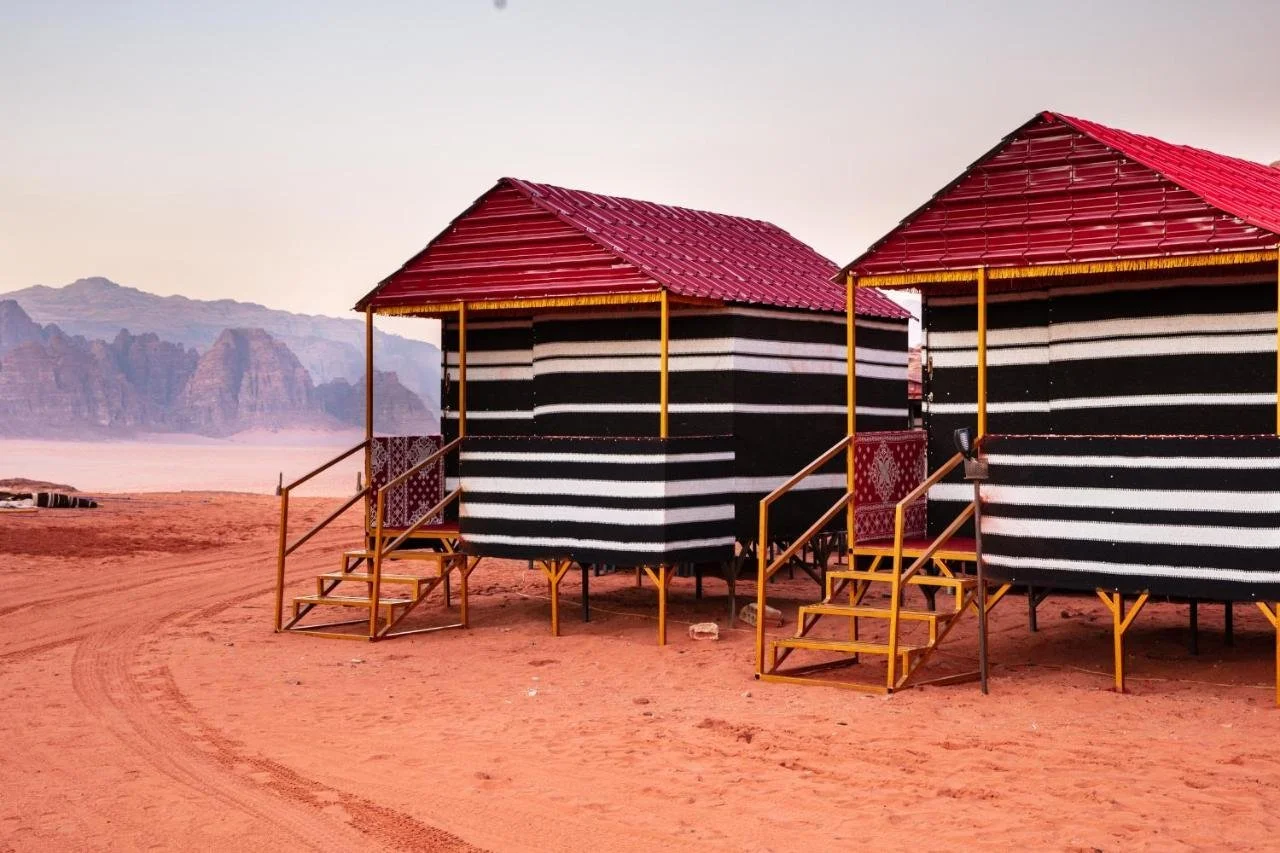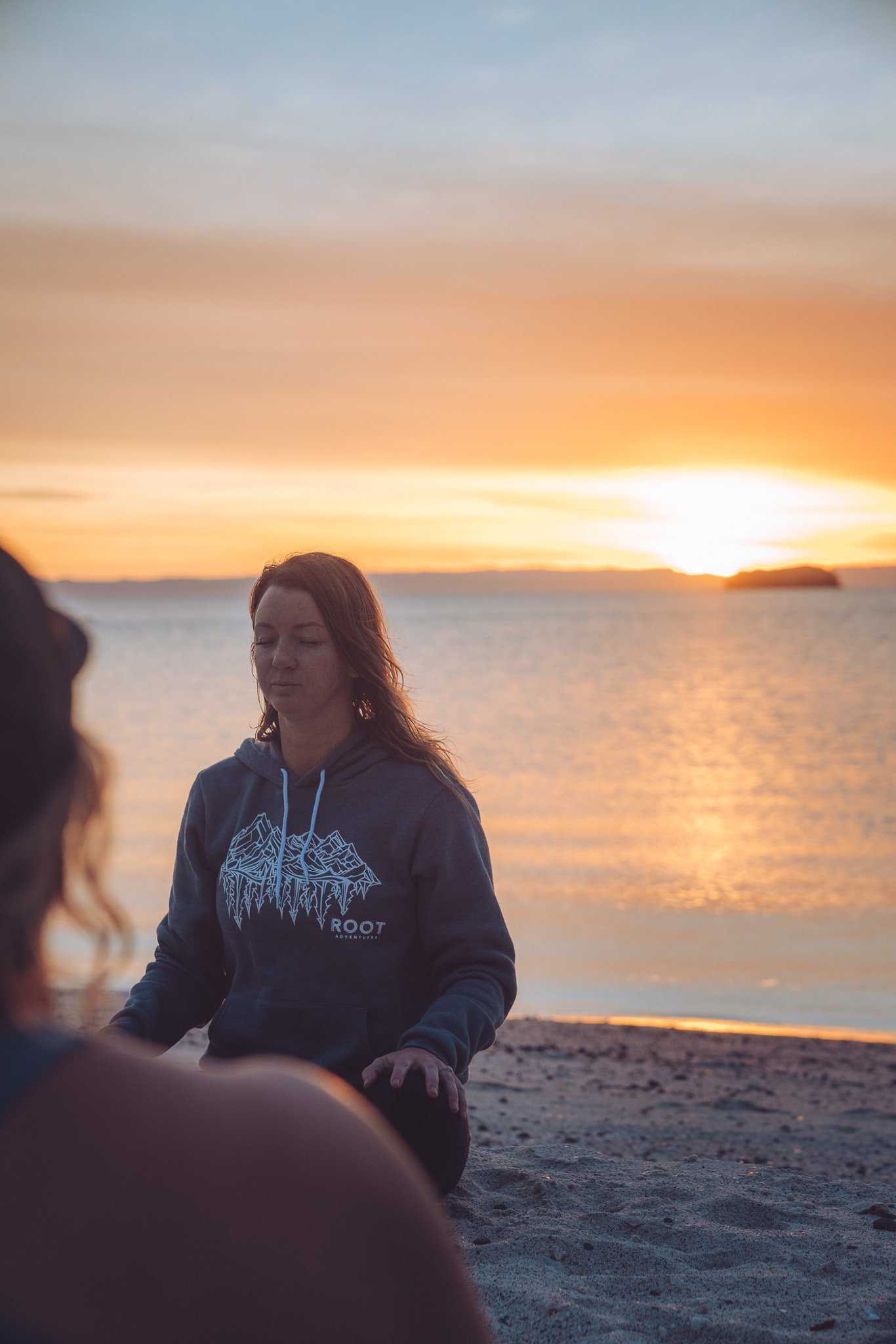The Jordan trekking Travel Guide
Everything you need to know about trekking in Jordan with Root Adventures!
You’re about to partake in an incredible adventure! Trekking the Jordan is one of the most visually stunning, humbling, and eye-opening experiences you can partake in. Your exploration of the great outdoors will be enhanced with mindfulness practices to lead you on an exploration of the great indoors, aka “the self”.
To get the most out of your journey it’s best to be prepared! We’ve laid out everything you need to know about traveling to Jordan with us. We can’t wait!
The Weather
How should I dress?
May is one of the two best months to visit Jordan. This transition month from spring to summer means warm to hot temperature with very little rain. The landscapes are lush and ablaze with wildflowers.
The average temperature in Amman is 72°F (22°C), with a daily range between 64-82°F (18-28°C). Petra is quite a bit warmer, averaging 80°F (25°C) for the month.
Traveling through the desert however means warmer days and cooler nights. It is therefore recommended to pack light and airy clothes, and sufficient sun protection, But don’t forget to take a light jacket or jumper as well. It can get quite cool and windy at night (below 20°C). Check out the packing list below.
The gear
What do I need to bring?
Keep in mind that this is a trekking trip, however it is not a backpacking trip so you will not be carrying a large pack. Porters transport your luggage to each new overnight accommodation. You will carry a day pack (recommended with hydration bladder) to hold your needed gear (sunscreen, water, camera, extra layers, etc.) for day hikes.
Daypack for hiking 20-30 liters
We recommend you to keep your day pack as light as possible, just to carry your water, camera and whatever else you want during the day.
Overnight Bag
We recommend large rucksacks, or soft duffle bags that can be locked: (70 liters and not to over-pack) as there will be a limited space in the jeep. It is recommended to be without wheels as it will be transferred from one campsite to another by a jeep. You will have access to your luggage once you arrive at the next campsite.
You will need to provide your own hiking clothing, rain gear, day packs, and sturdy hiking footwear.
You can find a detailed packing list here. We will also go over gear in much more detail on our two pre-trip calls.
Sustainability is one of our core-pillars, so we love to suggest sourcing gear from friends/family or second hand stores that sell lightly used gear! If you’re buying gear new, we recommend shopping locally or from small companies in whose mission you believe. Check the packing list for some of our favorites!
Preparing For Your Trek
How difficult is this really going to be?
Expect for this trek to be quite challenging at times! But with challenges comes great rewards like incredible views, the satisfaction of pushing yourself physically and mentally, and strong friendships formed.
We classify this trip a difficulty level of 5 out of 5. Which means prior hiking or backpacking experience is required. Expect elevation gain, variable terrain and other variable weather conditions.
This is the right trip for energetic people who like to be active and have a spirit of adventure and a positive attitude. We strongly recommend preparing yourself physically before showing up for this adventure. It is recommended that you do practice hikes, walks, or strength and cardio conditioning to prepare.
3 months out you will begin receiving our Pre-trip Preparation Series that comes with a complete training plan to help get you ready!
Click here for the detailed itinerary with daily mileage, approximate walking time, and elevation gain.
We know, you don’t want to be the last one or hold up the group…we hear this before every trip! However, please know that we consider our group to be a team, working together on each hike. This is an incredible opportunity to ask for help and support when perhaps in your daily life you’re always the one giving it.
Our local guides and Root Tour Leaders will be checking in with the group along the way and will be adjusting pacing as needed. Let’s do this thing together!
Do As The Locals Do
A crash course in local culture
It’s important at Root that when we travel we travel with an open mind and are respectful to the local ways, traditions, and customs. Keeping in mind that we are ambassadors of the US when we travel to foreign countries, it can be helpful to be prepared with some basic knowledge!
Language: Arabic is the official language of Jordan, but in most touristic places people understand and speak some English. However, it is usually very appreciated if you try using some Arabic, and you will for sure draw some smiles and friendly reactions. You can practice the phrases below, and ask your guide or driver to help you use these and other words and sentences appropriately.
Shukran. [shoe-kran] Thank you!
Afuan. [af-wan] You are welcome. (Used as an answer to Shukran.)
Ahlan Wa-Sahlan! [ah-lan wa sah-lan] Welcome! (to Jordan...)
Inshallah! [in-sha-llah] God willing!
Keef halak? [keef haa-lak] How are you?
Alhamdulillah. [al-hum-du-li-lah] Praise God. (Used as an answer to Keef halak?, or generally to comment on anything good.)
Yislamoo. [yiis-la-moo] Bless (your hands).(Used when being served food, handed a ticket, etc.)
Currency: The currency in Jordan is the Jordanian Dinar (JOD or JD). Keep in mind that Root includes everything you need for your travels outside of alcohol, souvenirs and the occasional meal.
Changing money is easy in Jordan, and most major currencies are accepted in cash and as traveler’s cheques. US-Dollars are the most accepted, followed by GBP and Euros.
It is useful to have cash for small shops, and when moving outside the bigger cities and tourism sites. We recommend using an ATM when you arrive (as opposed to getting cash before you arrive). Try to break larger notes (especially 50s and 20s) as often as possible when paying in hotels, restaurants, or bigger supermarkets and shops. In all other places in Jordan it is possible to survive almost entirely on credit cards and ATMs. Visa is the most widely accepted card, followed by MasterCard.
While most credit cards will often be accepted, but there is a possibility for foreign fees, be sure to check with your bank before you travel.
Dress: Jordan is a predominantly Islamic nation, and still tends to be quite conservative in many regions. We recommend dressing accordingly. As a general guideline, shoulders and knees should be covered – for women and men. Luckily most dress is loose, lightweight, long clothing and in many regards is a great choice: While being culturally respectful, you also stay cool and protected from the sun.
In Petra, Wadi Rum, Aqaba’s Beach Resorts, and at the Dead Sea, people are used to seeing tourists. A more relaxed dress code and even beach wear is therefore totally acceptable. Also during hiking shorts can be worn. We, however, generally recommend lightweight hiking trousers to be protected from the sun.
Electricity: Electricity runs on 220/240 volts in Jordan, and thin, circular two pin sockets are often used. However, you may find other types of sockets as well. If you do bring electrical appliances, we recommend to take along a travel adapter, as well as voltage converter if your appliance runs on anything else than 220/240 volts.
Drinking Water: Although it is totally fine to take a shower or brush your teeth with tab water in Jordan, it is not recommended to drink it. You can buy bottled water at small shops, supermarkets, in coffee shops or restaurants. Our local operators however, have been working to use less plastic on tours, and will provide you with filtered water to fill your reusable water bottle or bladder whenever possible.
Photography: Always be considerate of anyone’s desire not to be photographed. If you take photos of people, always ask them for permission first. The only exception is when photographing a public scene with a lot of people in it, aiming at no one in particular.
There are some places where photography is prohibited, and these areas are usually clearly marked. Do not take photographs of military installations or airports. If you are uncertain about whether or not photography is permitted, ask. Taking photographs when permission is not granted is inconsiderate at best and may result in the confiscation of your camera.
Safety: Generally, the security situation is very good in Jordan. Exercise the same safety precautions throughout your travels as you would at home. Be especially careful with your passport! It is a great idea to carry a photocopy of the informational pages of your passport (the pages containing your photograph and passport details, as well as any amendment pages and visas), and to leave another copy at home.
Accomodations
Where am i sleeping?
Sleeping accommodations are a combination of stays in hotels, ecolodges, safari style tent camping, and one night wilderness camping.
Feynan Ecolodge
This ecolodge is hailed as one of the best 25 ecolodges in the world by National Geographic Traveler Magazine. This award-winning, solar powered facility offers the most developed eco-experience in Jordan. Feynan Ecolodge’s electricity is solar-generated. There is limited electricity to light the guest bathrooms, kitchen, phone system, and other crucial functions. There are no electrical outlets in guest rooms. Cell phones, cameras and laptops can be recharged at the front desk. Wifi in the lobby area.
Little Petra Bedouin Camp
Little Petra Camp is owned and operated by a Bedouin family from Petra and it is an eco-friendly camp that offers a traditional & real Bedouin experience. All tents are private, but the bathrooms and the showers are shared. Each tent is equipped with beds, mattresses, blankets, and pillows. Wi-fi in the reception area only at the camp.
Rainbow Camp
Rainbow Camp is located in a in a protected area of Wadi Rum, with tents for two or three people with shared bathrooms. Enjoy sleeping in traditional Bedouin-style large tents, Bedouin-style eating, a fireplace with Bedouin music, and traditional cuisine. No Heat/Air conditioner inside the tents. Wi Fi in reception area only at the camp. No coverage outside the camp.
Wilderness Camping
Accommodations are dome tents that have mattresses and blankets provided, as well as a ‘wash room’ tent and toilet tent as well. These are basic facilities, but allow privacy to wash and use the bathroom. No wi-fi, no electricity.
Mindfulness
What if I’ve never meditated?
Have no fear! No prior meditation or mindfulness experience needed.
Nature is the ultimate teacher. Just getting out into the great outdoors has been proven to be incredibly beneficial for your mental and physical health.
Your Root Tour Leaders will provide you with simple and practical ways to keep your connection with nature, yourself, and your fellow travelers at the forefront of your experience.
But don’t worry, this won’t be a serious or quiet trip. At Root we see mindfulness as a way to participate in the ALIVENESS of life.
There will be moments you’ll be encouraged to observe silence, listen to nature, reflect on your internal experience or even possibly journal and share. And there will be many moments of raucous laughter, joyous storytelling, and playing in the dirt. Our trips have a little bit of everything!
To help you get the most out of your experience you will receive a pre-trip guide that has mindfulness and meditation practices, potential journaling prompts, and thoughtful ways to connect with nature throughout your adventure.
Final Tips
Anything else I need to know?
We’d love to impart some final words of wisdom for you here. These are tips and tricks we’ve learned over the years exploring, trekking, and guiding groups.
Pack light! The lighter the better. We cannot stress this enough! When packing ask yourself this question: “Do I absolutely need this?” If the answer is no, leave it behind.
Don’t wait to get your hiking boots! Purchase them well in advance of your hike and go for practice walks to wear them in.
Tell your guides if you have a “hot spot” forming on your feet while hiking. They can help! Hot spots are red tender areas that appear before blisters form. The keyword here is before! Telling your guide early can help prevent blisters from forming.
A word about luggage. If possible, pack so that you can bring everything in a carry-on. That way if your luggage gets lost (knock on wood) you won’t be trying to piece gear together or purchase lots of expensive items last minute. If you are checking luggage then we recommend wearing your hiking boots and packing hiking essentials in your carry-on just in case!








